Price:₹45,000.00
The Panch Kedar Yatra is a sacred pilgrimage in the Indian state of Uttarakhand, which involves trekking to five different temples dedicated to Lord Shiva.
These temples are known as the Panch Kedar, and they are located in remote areas of the Garhwal Himalayas. The pilgrimage is considered highly significant for devotees of Lord Shiva, and it offers a unique opportunity to explore the natural beauty of the Himalayan region.
Here’s some detailed information about each of the temples and the trekking route:
- Kedarnath Temple: This is the most famous temple among the Panch Kedar. It is located at an altitude of 3,583 meters (11,755 feet) above sea level, in the Rudraprayag district of Uttarakhand. The temple is dedicated to Lord Kedarnath, who is believed to be one of the forms of Lord Shiva. The trek to Kedarnath Temple starts from Gaurikund, which is about 16 kilometers away.
- Tungnath Temple: Situated at an altitude of 3,680 meters (12,073 feet), Tungnath is the highest temple of Lord Shiva in the world. It is the second stop of the Panch Kedar Yatra. The trek to Tungnath starts from Chopta, which is around 3.5 kilometers away. From Tungnath, an additional trek of about 1.5 kilometers leads to Chandrashila Peak, which offers breathtaking panoramic views of the surrounding peaks including Nanda Devi, Trishul, and Chaukhamba.
- Rudranath Temple: This temple is located at an altitude of 2,286 meters (7,500 feet) above sea level, in the district of Chamoli. Rudranath Temple is believed to be the face of Lord Shiva, and it is the third stop of the Panch Kedar Yatra. The trek to Rudranath starts from Sagar Village, which is around 19 kilometers away.
- Madhyamaheshwar Temple: Situated at an altitude of 3,497 meters (11,473 feet), Madhyamaheshwar Temple is believed to be the navel (Madhya) of Lord Shiva. It is the fourth stop of the Panch Kedar Yatra. The trek to Madhyamaheshwar starts from Uniana, which is around 20 kilometers away.
- Kalpeshwar Temple: Kalpeshwar Temple is located at an altitude of 2,134 meters (7,001 feet) above sea level, in the Urgam Valley of Chamoli district. It is believed to be the hair (Jata) of Lord Shiva, and it is the final stop of the Panch Kedar Yatra. The trek to Kalpeshwar starts from Helang, which is around 11 kilometers away.
The entire Panch Kedar Yatra trek is challenging and requires adequate preparation, including physical fitness and proper gear. The best time to undertake this pilgrimage is during the summer months (May to June) and early autumn (September to October), as the weather is relatively stable during these times. However, weather conditions can change rapidly in the mountains, so it’s essential to stay informed and be prepared for all eventualities. Additionally, it’s advisable to consult with local authorities or experienced trekking guides before embarking on the journey
The Panch Kedar Yatra holds significant historical and religious importance in Hindu mythology,
. Here’s an overview of the history and legend behind the Panch Kedar Yatra:
Legend of the Pandavas and Lord Shiva: According to Hindu mythology, after the Kurukshetra War, the Pandavas sought redemption for their sins committed during the battle, particularly the killing of their relatives. Lord Krishna advised them to seek the blessings of Lord Shiva, who could absolve them of their sins.
The Story: The Pandavas embarked on a journey to find Lord Shiva, who evaded them by taking different forms. When the Pandavas finally reached the Himalayas, Lord Shiva, not wanting to reveal himself, disguised as a bull. However, Bhima, the strongest of the Pandavas, recognized Lord Shiva and tried to catch him. But Lord Shiva disappeared, leaving behind his body parts at five different locations, which later became the Panch Kedar temples.
The Five Kedars: The five temples are believed to represent different parts of Lord Shiva’s body:
- Kedarnath: The hump of Lord Shiva is worshipped here. It is the most prominent temple among the Panch Kedar temples and is located in the Rudraprayag district of Uttarakhand.
- Tungnath: This temple is believed to be the place where Lord Shiva’s arms appeared. It is the highest Shiva temple in the world and is located in the Rudraprayag district.
- Rudranath: This temple is dedicated to Lord Shiva’s face and is situated in the Chamoli district.
- Madhyamaheshwar: It is believed to be the navel of Lord Shiva, and the temple is located in the Chamoli district.
- Kalpeshwar: This temple is associated with Lord Shiva’s hair, and it is situated in the Chamoli district.
Significance of the Yatra: The Panch Kedar Yatra is considered a sacred pilgrimage that offers devotees the opportunity to seek the blessings of Lord Shiva and attain spiritual purification. It is believed that undertaking this journey with devotion and sincerity can help devotees attain moksha (liberation) and divine grace.
Over the centuries, the Panch Kedar Yatra has attracted pilgrims from all over the world, who undertake the challenging trek to visit these sacred temples nestled in the pristine Himalayan ranges. The yatra not only offers spiritual solace but also allows pilgrims to immerse themselves in the awe-inspiring beauty of the Himalayas.
Here’s a day-by-day itinerary for the Panch Kedar Yatra trek:
Day 01: Drive from Haridwar/Rishikesh to Guptkashi/Gaurikund (Drive) 240 km ) 8/9 hours overnight stay Hotel
Day 02: Trek from Gaurikund to Kedarnath Temple (Trek) 16 km (8/9 hours) overnight stay Camp or Hotel
Day 03: Trek from Kedarnath to Guptkashi (Trek)overnight stay Hotel
Day 04 Driving from Guptakashi to Ransi and then trekking to Gaundhar. Here’s an overview of the route and the approximate distances:
Day 05 Trek from Gaundhar to Madhyamaheshwar Temple. Here’s what you can expect:
Day 06 Trekking from Madhyamaheshwar Temple back to Ransi, and then driving to Chopta. Here’s what your day might look like:
Day 07: Trek Chopta to Tungnath and Chandrashila Peak (Trek) back to Camp overnight stay Camp
Day 08: Drive from Chopta to Sagar Village (Drive) – Same day trek to Pannar Bugyal
Day 09 –Trekking from Pannar Bugyal to Rudranath and back to Pannar Bugyal would involve a considerable distance and time, as Rudranath is one of the Panch Kedar temples located at a higher altitude. Here’s a suggested itinerary for this trek:
Day 10: Trek from Pannar Bugyal to Sagar Village Same day Drive to to Joshimath/ Garudgaga
Day 11: Drive from Garudganga to Kalpeshwar temple after darshan pooja back to Hotel
Day 12:- Garudganga to Rishikesh or Haridwar can vary depending on the specific location of Garudganga and the chosen route. However, I can provide a general overview of the route and approximate distance:
The best time to visit the Panch Kedar temples for the yatra is typically during the summer and early autumn months,
Summer (May to June):
- May to June is considered one of the most popular times for the Panch Kedar Yatra.
- During this period, the weather in the Himalayan region is generally mild and pleasant, with clear skies and comfortable temperatures during the day.
- The snow has usually melted by this time, making the trekking trails more accessible and safer for pilgrims.
- The lush greenery and blooming flowers add to the scenic beauty of the Himalayan landscape, enhancing the overall experience of the yatra.
Early autumn (September to October):
- Another excellent time to visit the Panch Kedar temples is during the early autumn months of September to October.
- During this time, the monsoon season has ended, and the weather begins to clear up, offering crisp and clear days for trekking.
- The temperatures are moderate, making it comfortable for trekking during the day, while the nights may be cooler at higher altitudes.
- The autumn months also offer stunning views of the surrounding Himalayan peaks, as the skies tend to be clearer after the monsoon season.
The difficulty level of the Panch Kedar Yatra trek Here’s a general overview of the difficulty level of the trek:
- Moderate Terrain:
- The trekking trails to the Panch Kedar temples often involve moderate to challenging terrain, including steep ascents, descents, rocky paths, and uneven surfaces.
- Some sections of the trails may require navigating through dense forests, crossing streams, or traversing narrow ridges.
- Trekking at high altitudes can also pose challenges due to reduced oxygen levels, which may cause altitude-related issues such as altitude sickness.
- Altitude Gain:
- The Panch Kedar temples are located at varying altitudes ranging from approximately 1,500 meters (4,900 feet) to over 3,500 meters (11,500 feet) above sea level.
- Trekking to higher altitudes involves gradual altitude gain, which can be physically demanding, especially for those not acclimatized to high altitudes.
- Duration and Distance:
- The duration and distance of each trek to the Panch Kedar temples vary, but most treks involve covering distances ranging from 5 kilometers to 18 kilometers (one way).
- Trekking durations can range from 2-3 hours for shorter treks to 7-9 hours or more for longer treks, depending on the specific route and individual pace.
- Weather Conditions:
- Weather conditions in the Himalayan region can be unpredictable, with temperatures varying from hot and sunny to cold and windy, even during the summer months.
- Rainfall, snowfall, and sudden changes in weather can impact trail conditions and visibility, adding to the difficulty level of the trek.
- Fitness Requirements:
- While prior trekking experience is not always necessary, participants should have a basic level of physical fitness and endurance to undertake the Panch Kedar Yatra trek.
- Regular cardiovascular exercise, strength training, and endurance-building activities can help prepare for the trek.
How to Reach Panch Kedar Yatra Trek ?
Reaching Haridwar or Rishikesh, the starting points for the Panch Kedar trek, is relatively straightforward as both cities are well-connected by various modes of transportation. Here’s how you can reach Haridwar or Rishikesh:
By Train:
- Haridwar and Rishikesh both have railway stations, and they are well-connected to major cities like Delhi, Mumbai, Kolkata, Chennai, and others.
- You can check the train schedules and book tickets through the official Indian Railways website or other online booking platforms.
- Once you arrive at the railway station in Haridwar or Rishikesh, you can proceed with your onward journey by road.
By Bus:
- Haridwar and Rishikesh are easily accessible by road from various parts of North India.
- State-run buses as well as private buses operate regular services to Haridwar and Rishikesh from major cities like Delhi, Dehradun, Chandigarh, Jaipur, and others.
- You can book bus tickets through state transport websites, travel agencies, or at the respective bus stations.
By Air:
- The nearest airport to Haridwar and Rishikesh is the Jolly Grant Airport in Dehradun, which is approximately 35-45 kilometers away.
- You can fly to Dehradun from major cities like Delhi, Mumbai, Bengaluru, and others.
- From the airport, you can hire a taxi or take a pre-booked cab to reach Haridwar or Rishikesh.
By Car/Taxi:
- You can also reach Haridwar or Rishikesh by driving your own car or hiring a taxi.
- Both cities are well-connected by roads, and you can follow national highways to reach your destination.
- The journey duration will depend on your starting point, but major cities like Delhi are approximately 200-250 kilometers away and can take around 5-7 hours by road.
Reaching the Panch Kedar temples involves traveling to the Garhwal region of Uttarakhand, India, and then trekking to each of the five temples. Here’s a general guide on how to reach the starting points of the Panch Kedar Yatra:
- Reach Haridwar or Rishikesh:
- Haridwar and Rishikesh are major cities in Uttarakhand and serve as the gateway to the Garhwal Himalayas.
- Both cities are well-connected by road and rail networks. You can reach Haridwar or Rishikesh by road from major cities like Delhi, Dehradun, and other neighboring states. Additionally, there are regular trains to Haridwar and Rishikesh from various parts of India.
- Travel to the Starting Points:
- From Haridwar or Rishikesh, you’ll need to travel to the starting points of the individual treks to each of the Panch Kedar temples.
- For example:
- The trek to Kedarnath Temple starts from Gaurikund, which is accessible from Rishikesh by road.
- The trek to Tungnath Temple starts from Chopta, which is accessible from Rishikesh by road.
- The trek to Rudranath Temple starts from Sagar Village, which is accessible from Rishikesh by road.
- The trek to Madhyamaheshwar Temple starts from Uniana, which is accessible from Rishikesh by road.
- The trek to Kalpeshwar Temple starts from Helang, which is accessible from Rishikesh by road.
- Trek to the Temples:
- Once you reach the starting points of the treks, you’ll need to trek to each of the Panch Kedar temples.
- The trekking routes vary in difficulty and duration, ranging from moderate to challenging. It’s essential to be adequately prepared with proper trekking gear, supplies, and physical fitness.
- Return Journey:
- After visiting all the temples, you’ll need to trek back to the respective starting points and then travel back to Haridwar or Rishikesh to conclude your journey.
- From Haridwar or Rishikesh, you can continue your onward journey by road or rail to your desired destination.
Preparing the right gear and supplies is crucial for a successful and safe Panch Kedar Yatra trek. Here’s a comprehensive list of essential items to carry for the trek:
Clothing:
- Quick-drying moisture-wicking t-shirts and trekking pants
- Warm fleece jacket or down jacket for cold evenings and mornings
- Waterproof and windproof outer shell jacket and pants
- Thermal inner wear for high altitudes and cold temperatures
- Woolen socks and extra pairs of hiking socks
- Comfortable trekking shoes with good grip and ankle support
- Hat or cap for sun protection
- Gloves and scarf or neck gaiter for cold weather
Gear: 9. Backpack with rain cover to carry your essentials
- Sleeping bag suitable for the temperatures you’ll encounter
- Trekking poles for stability and support during the trek
- Headlamp or flashlight with extra batteries
- Sunglasses with UV protection
- Trekking map, compass, or GPS device
- Portable water purifier or purification tablets
- Multi-tool or pocket knife
- Whistle for signaling in case of emergencies
Personal Items: 18. Personal identification documents, permits, and emergency contact information
- First aid kit with essential medications, bandages, antiseptic wipes, etc.
- Sunscreen with high SPF and lip balm with SPF protection
- Insect repellent or mosquito net
- Toiletries including toothbrush, toothpaste, biodegradable soap, etc.
- Wet wipes or hand sanitizer for hygiene
- Quick-dry towel or microfiber towel
- Personal medications if required
- Lightweight daypack for shorter excursions from the base camp
Miscellaneous: 27. High-energy snacks like nuts, energy bars, chocolates, etc.
- Reusable water bottle or hydration bladder with at least 2-3 liters capacity
- Cash in small denominations for any purchases or emergency situations
- Camera or smartphone for capturing memories (optional)
- Notebook and pen for jotting down observations or journaling (optional)
It’s essential to pack efficiently, balancing between carrying necessary items and keeping your backpack lightweight. Additionally, check the weather forecast and specific requirements for the Panch Kedar Yatra trek before finalizing your packing list. Always prioritize safety and comfort during your trekking adventure.
Choosing the right trekking organization for the Panch Kedar Yatra can significantly impact your overall experience and safety during the journey. Here are several reasons why Himalayan Hikers trekking organization might be a good choice for the Panch Kedar Yatra:
- Experience and Expertise:
- Himalayan Hikers may have extensive experience organizing treks in the Himalayas, including the Panch Kedar Yatra.
- They may have knowledgeable guides and support staff who are familiar with the terrain, trails, and local customs, enhancing the quality of your trekking experience.
- Safety Standards:
- Himalayan Hikers may prioritize safety by adhering to high safety standards and protocols during treks.
- They may provide necessary safety equipment, emergency communication devices, and first aid kits to ensure the well-being of trekkers.
- Well-Planned Itinerary:
- Himalayan Hikers may offer well-planned itineraries for the Panch Kedar Yatra, including transportation arrangements, accommodation options, and trekking routes.
- They may optimize the itinerary to maximize acclimatization, minimize risks, and ensure an enjoyable experience for trekkers.
- Guided Tours and Support:
- Himalayan Hikers may offer guided tours led by experienced trek leaders who can provide support, guidance, and assistance throughout the journey.
- Trek leaders may offer insights into the local culture, history, and natural surroundings, enriching your trekking experience.
- Customer Reviews and Reputation:
- Positive customer reviews and a good reputation in the trekking community can indicate Himalayan Hikers’ reliability, professionalism, and commitment to customer satisfaction.
- You can research customer feedback, testimonials, and online reviews to gauge the organization’s reputation and track record.
- Environmental Sustainability:
- Himalayan Hikers may practice environmental sustainability by promoting responsible trekking practices, minimizing waste generation, and respecting the natural surroundings.
- They may emphasize Leave No Trace principles and encourage trekkers to minimize their environmental impact during the journey.
- Customized Services:
- Himalayan Hikers may offer customized services to meet the specific needs and preferences of trekkers, such as private tours, tailored itineraries, and group discounts.
- They may be responsive to trekkers’ inquiries, providing personalized assistance and recommendations.
Before choosing Himalayan Hikers or any trekking organization for the Panch Kedar Yatra, it’s essential to conduct thorough research, ask questions, and clarify any doubts or concerns you may have. Consider factors such as pricing, inclusions, exclusions, cancellation policies, and payment terms before making your decision. Additionally, communicate your expectations and preferences clearly to ensure a memorable and enjoyable trekking experien

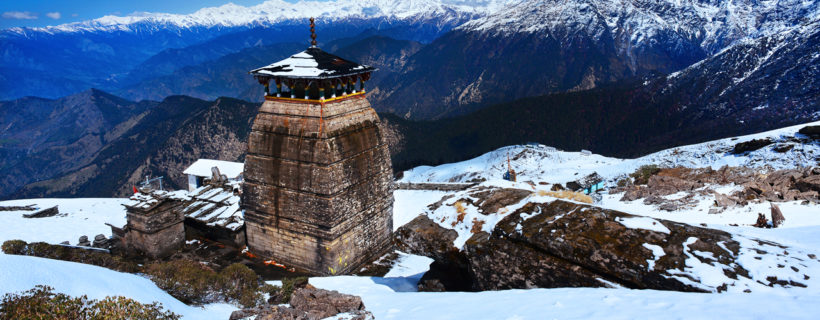
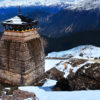
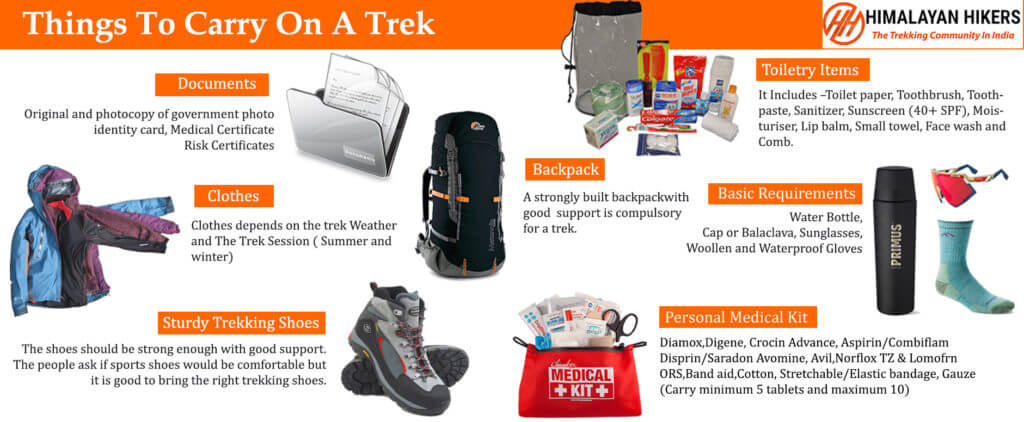


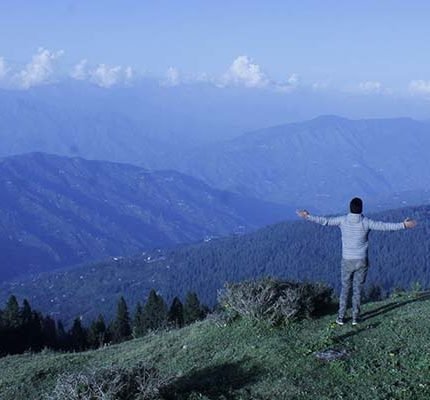
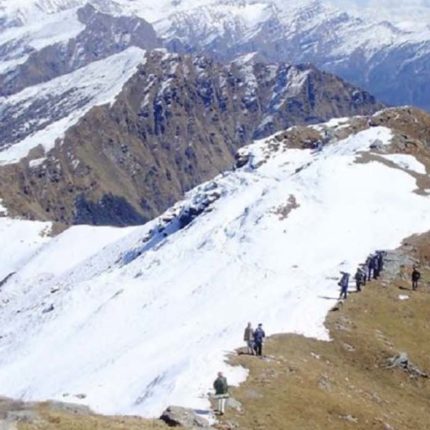
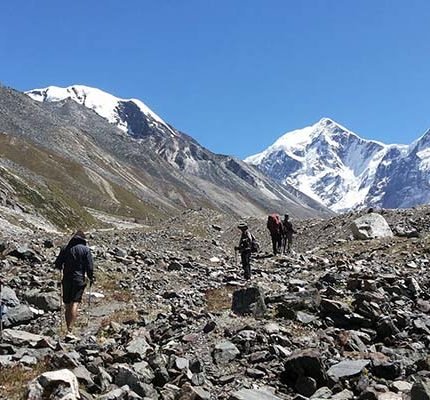

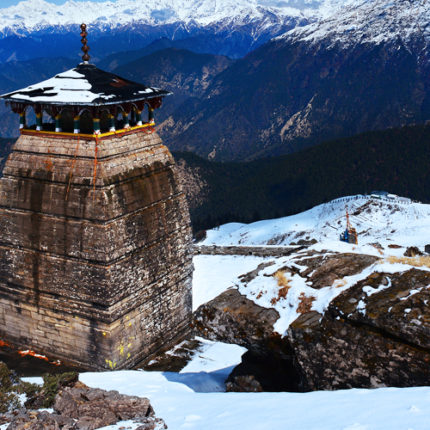
Rajani –
Want to know the price